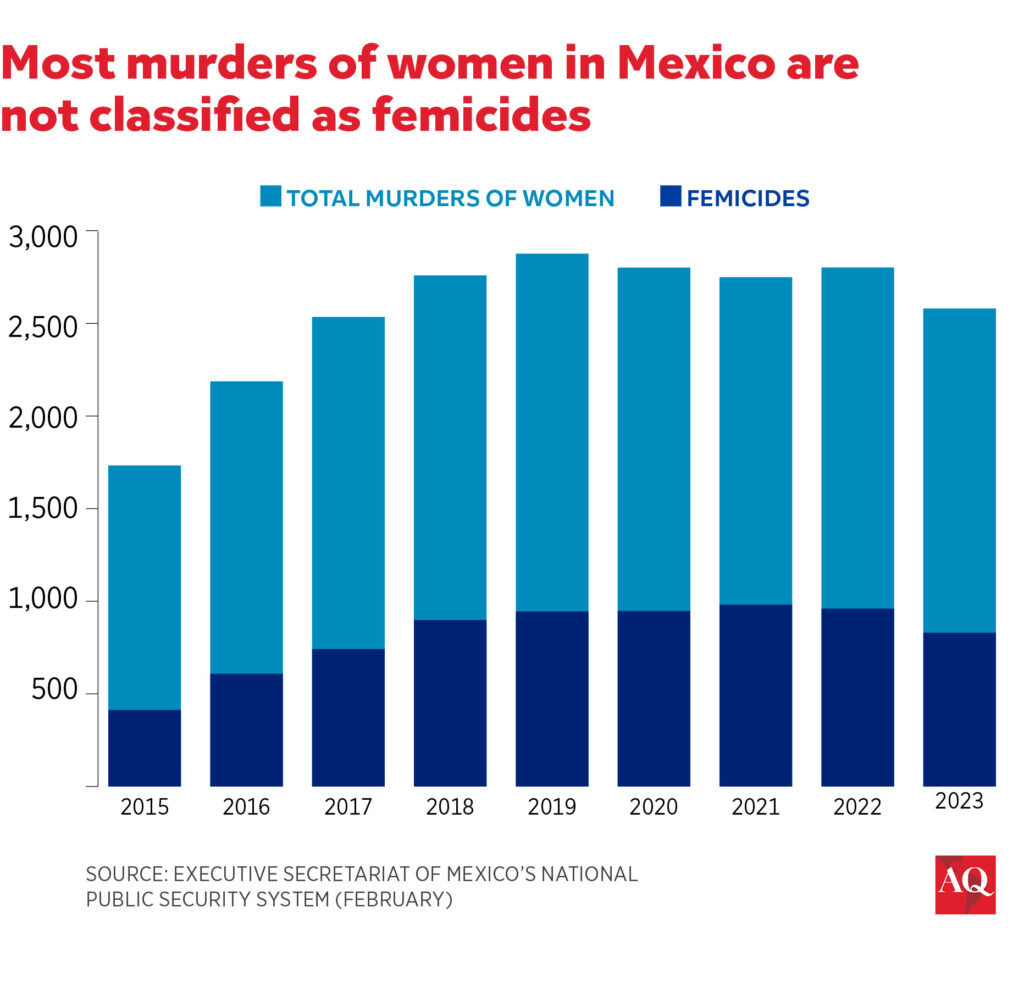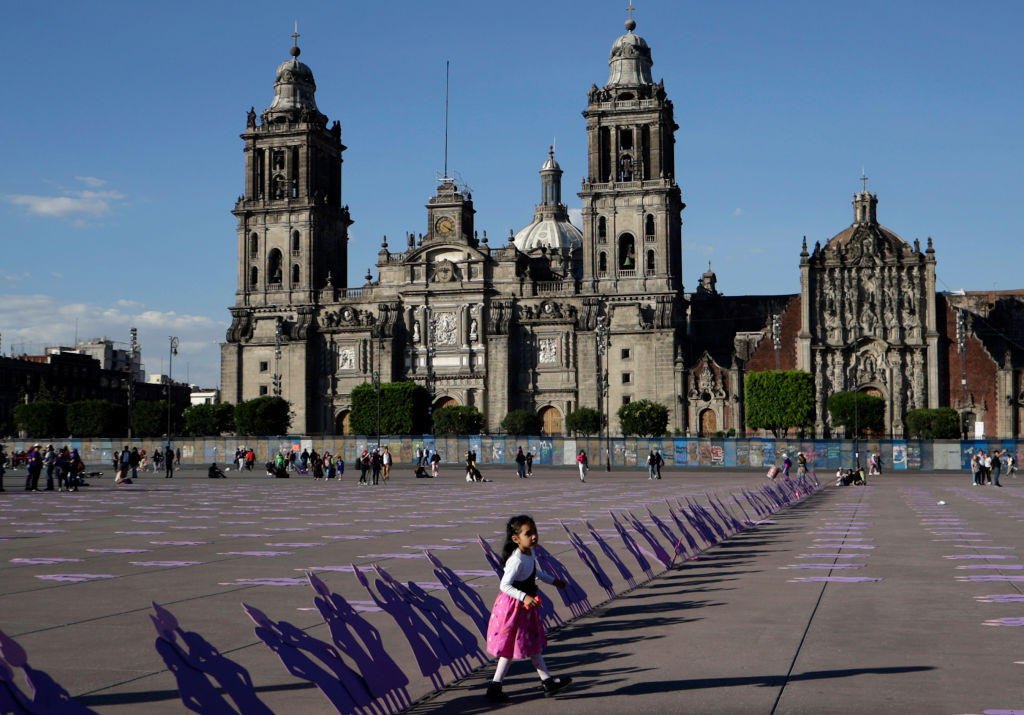In late March, an 8-year-old girl went missing in the city of Taxco in the southwestern Mexican state of Guerrero. Camila Gómez Ortega had left her home to play at a neighbor’s house but never came back. When her mother reported Camila missing, she encountered, as many family members of the disappeared do in Mexico, indifference and even contempt. When she received messages asking for a ransom, Camila’s mother knew her daughter was in danger. The day after, March 28, authorities found Camila’s lifeless body on the side of a road.
Camila’s murder, which is now being investigated as a femicide (the intentional killing of a woman because of her gender), would have been enough to mark a tragic week in the country. But the story did not end there.
After family members saw a video that implicated a neighbor, Ana Rosa Díaz Aguilar, in the disappearance and potential killing of Camila, people surrounded Ana Rosa’s home, and, despite the presence of the municipal police, they attacked her and her two sons (17 and 21 years old). Ana Rosa died a few hours later, and her two sons were hospitalized with severe injuries.
Consistent with the hundreds of cases of mob attacks I have examined in my work, this case did not happen in a political power vacuum. Instead, it occurred in the presence of state authorities that were perceived as corrupt, ineffective and incapable of providing security and administering justice.
The violent episodes that took place in Taxco offer a window into broader dynamics of violence, state neglect and impunity in Mexico and their different impacts on women and girls. They underscore the urgent need to foster a gender perspective within Mexico’s justice and security apparatus, as well as recognize the state’s responsibility in the makings of this crisis.
In Mexico, around 10 women and girls are murdered every day. According to data from the Executive Secretariat of the National Public Security System, 2,580 women were murdered in Mexico in 2023. Of this total, only 830 were categorized as femicides. Mexican prosecutors often fail to prosecute homicides against women as femicides despite the existence of sweeping evidence.

The lack of legislative homogeneity across the country’s different states hinders the government’s ability to address gender-based violence. Adding to this, militarized and punitive security strategies have increased women’s and girls’ victimization levels and their risk of disappearance and femicide. In a country where at least 92% of crimes go unpunished, families of femicide victims face a context in which impunity feeds into cycles of fear, re-victimization and violence.
Impunity is also central to understanding the prevalence of mob attacks in Mexico. This collective, public and extralegal form of violence is driven by people’s attempt to punish suspected criminals who, they believe, will otherwise go unpunished. Mob attacks occur against the backdrop of heightened perceptions of crime, high impunity levels, and a deep distrust towards state authorities, particularly the police.
According to the 2023 Americas Barometer, only 31% of Mexican citizens trust the police (the average in Latin America is 38%, and according to Gallup, in the U.S. it is 69%). Although most mob attacks in Mexico are directed against men, the attack on Ana Rosa Díaz Aguilar in Taxco shows that women can also fall victim to this crime. It also demonstrates how women can act as perpetrators of violence, adding nuance to common perceptions of women as passive victims.
While this mob attack became national news (President Andrés Manuel López Obrador even addressed the case in his morning press conference), it is not exceptional. According to the Lynching in Latin America dataset (which defines lynching as “publicly displayed physical violence executed by a group of civilians against alleged wrongdoers”) there were a total of 1,134 lynching cases in Mexico between 2010 and 2019, and the country has the third-highest rate of lynching, after Guatemala and Bolivia. Another study published by researchers of the Metropolitan Autonomous University (UAM) registered 1,619 cases between 2016 and 2022, a period that includes four years of López Obrador’s presidency (which began in 2018).
Security challenges and Mexico’s next president
Thus far, security proposals put forward by the main presidential candidates, Xóchitl Gálvez and Claudia Sheinbaum (who leads the polls), have fallen short of recognizing the centrality of gender-based violence and the state’s responsibility in perpetuating this violence. Sheinbaum has suggested that all homicides against women should be prosecuted as femicides, a step in the right direction given the detrimental impact of underreporting and lack of investigation in women’s access to justice. However, Sheinbaum has also said she will keep involving the military in public security “until it is necessary” despite mounting evidence regarding the detrimental impact of militarization on human rights and women’s safety.
Gálvez has pledged “zero impunity” for femicide cases and proposed to reform the justice security system to prevent revictimization and increase mechanisms of protection and investigation. But, at the same time, Gálvez has stated that she will prioritize tough-on-crime measures, such as the building of a “mega-prison,” an approach that is likely to incentivize police abuse and that does not tackle the institutional and social roots of violence.
The fact that the two female candidates have failed to provide a cohesive and thorough approach to confront gender-based violence underscores their inability to recognize that militarized and punitive approaches are part of the problem, not the solution. Rather than more military, more police, and more prisons, citizens require more effective, transparent, and accountable institutions. To break the cycle of violence, insecurity, and retribution engulfing the country, Mexico’s next president needs to recognize that impunity and gender-based violence are at the center of the country’s security crisis.











